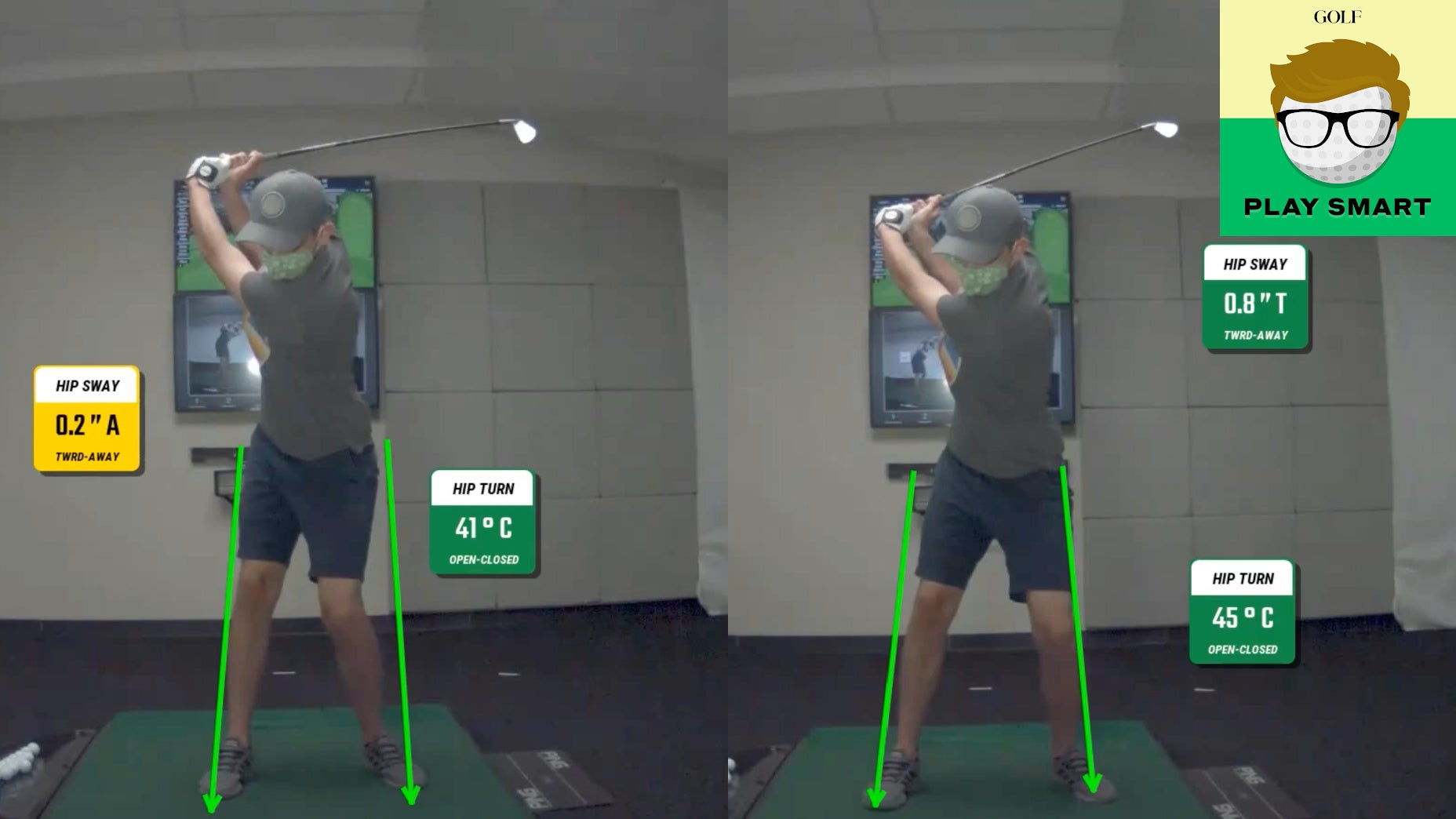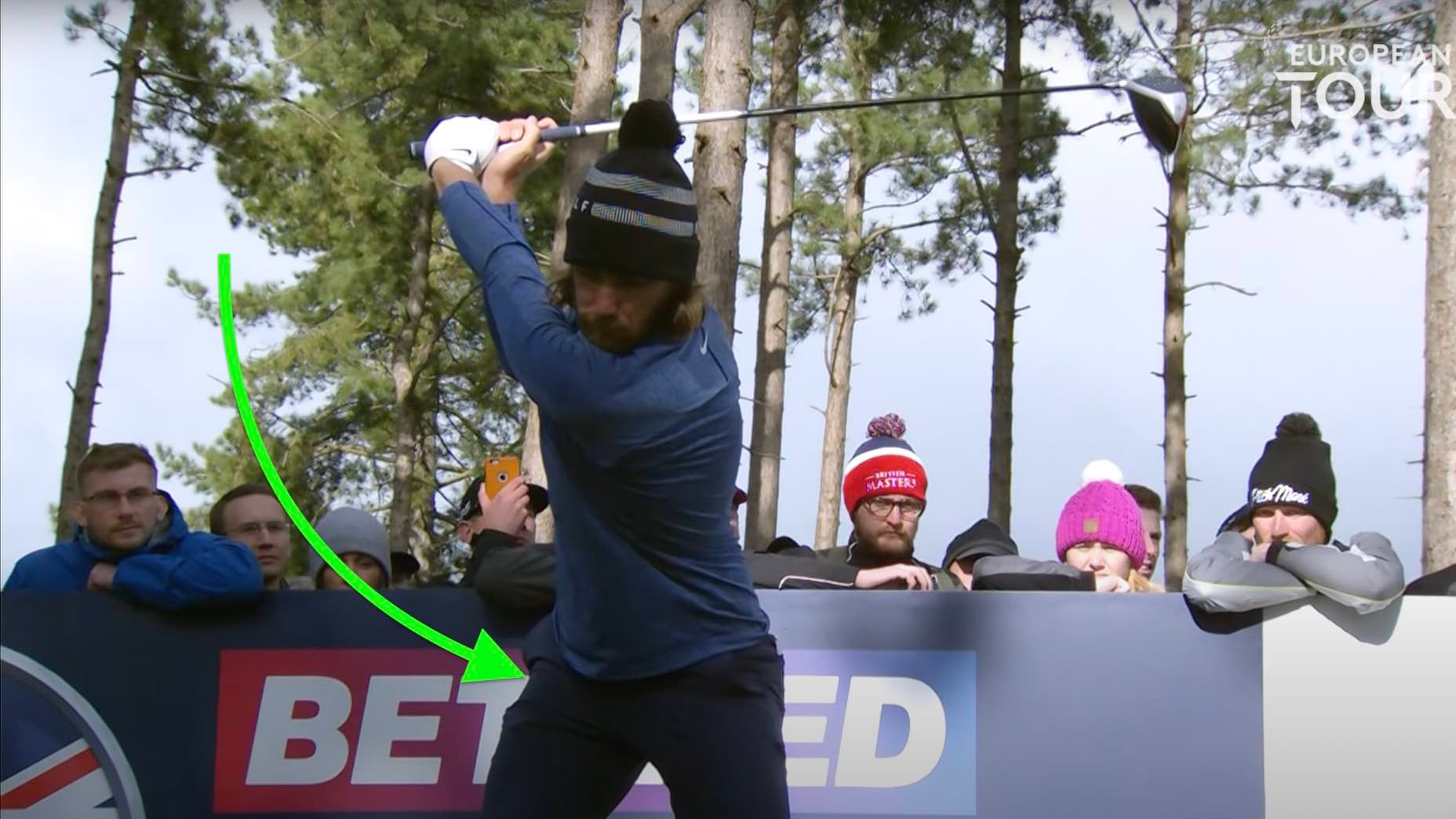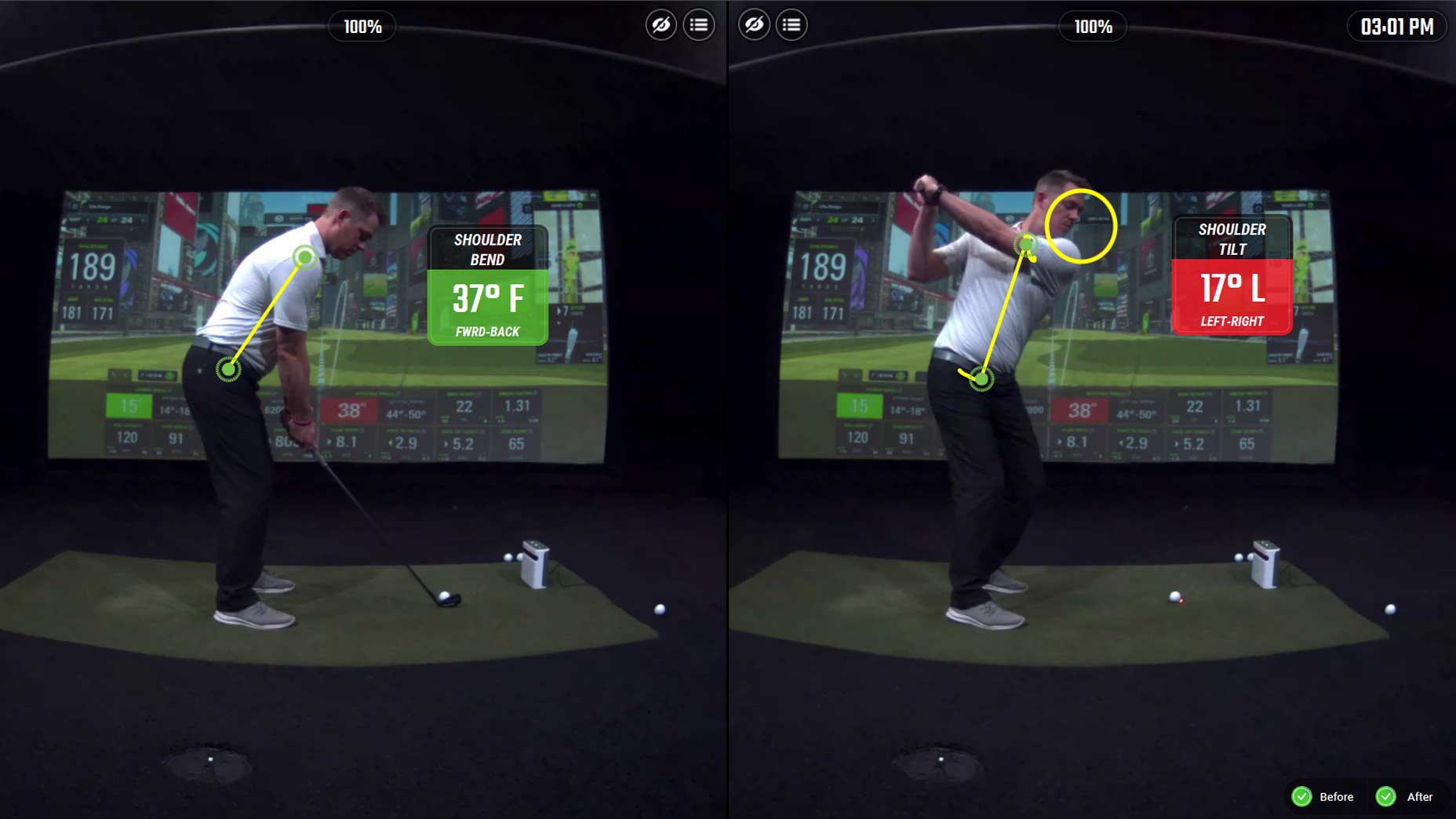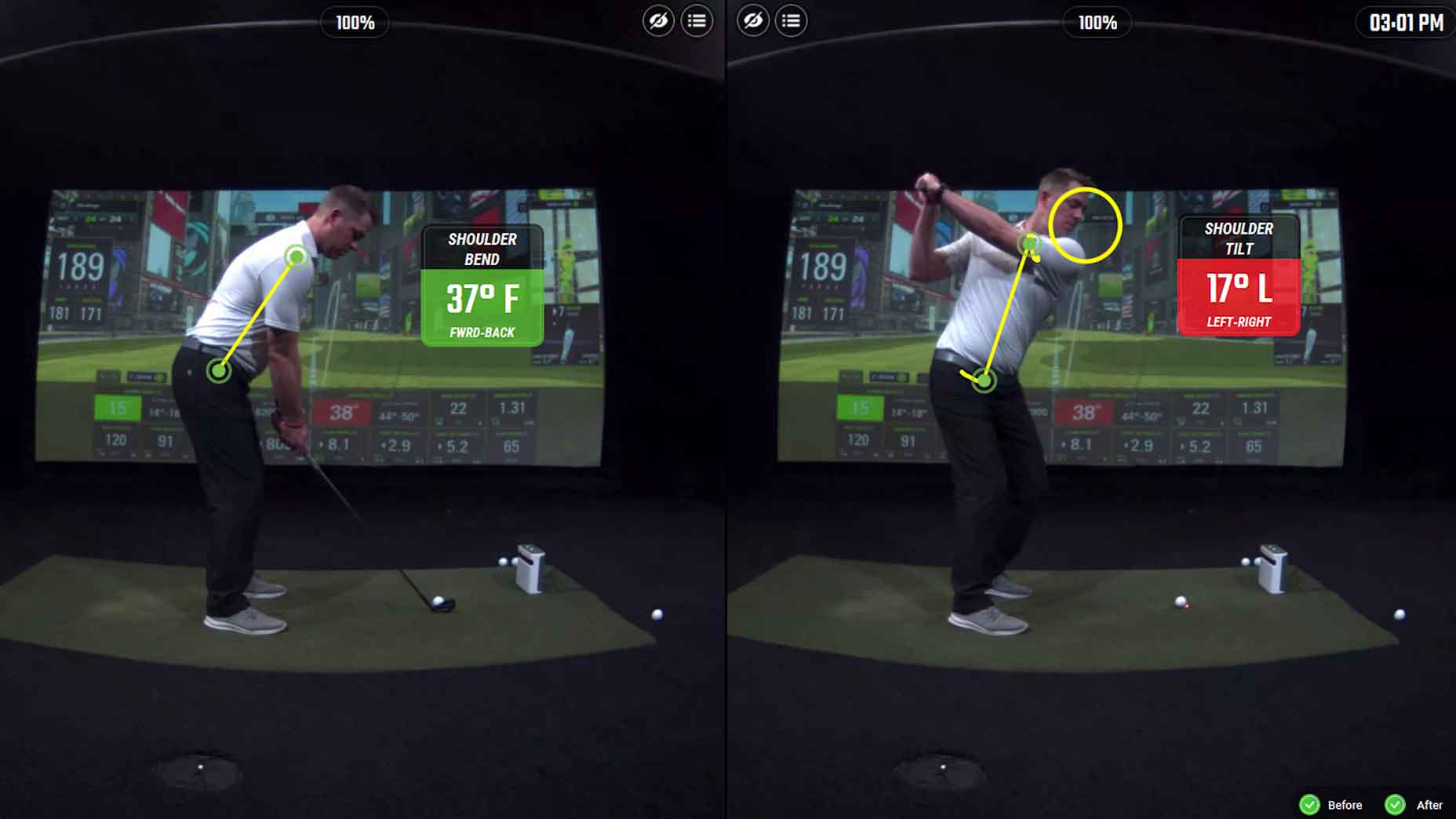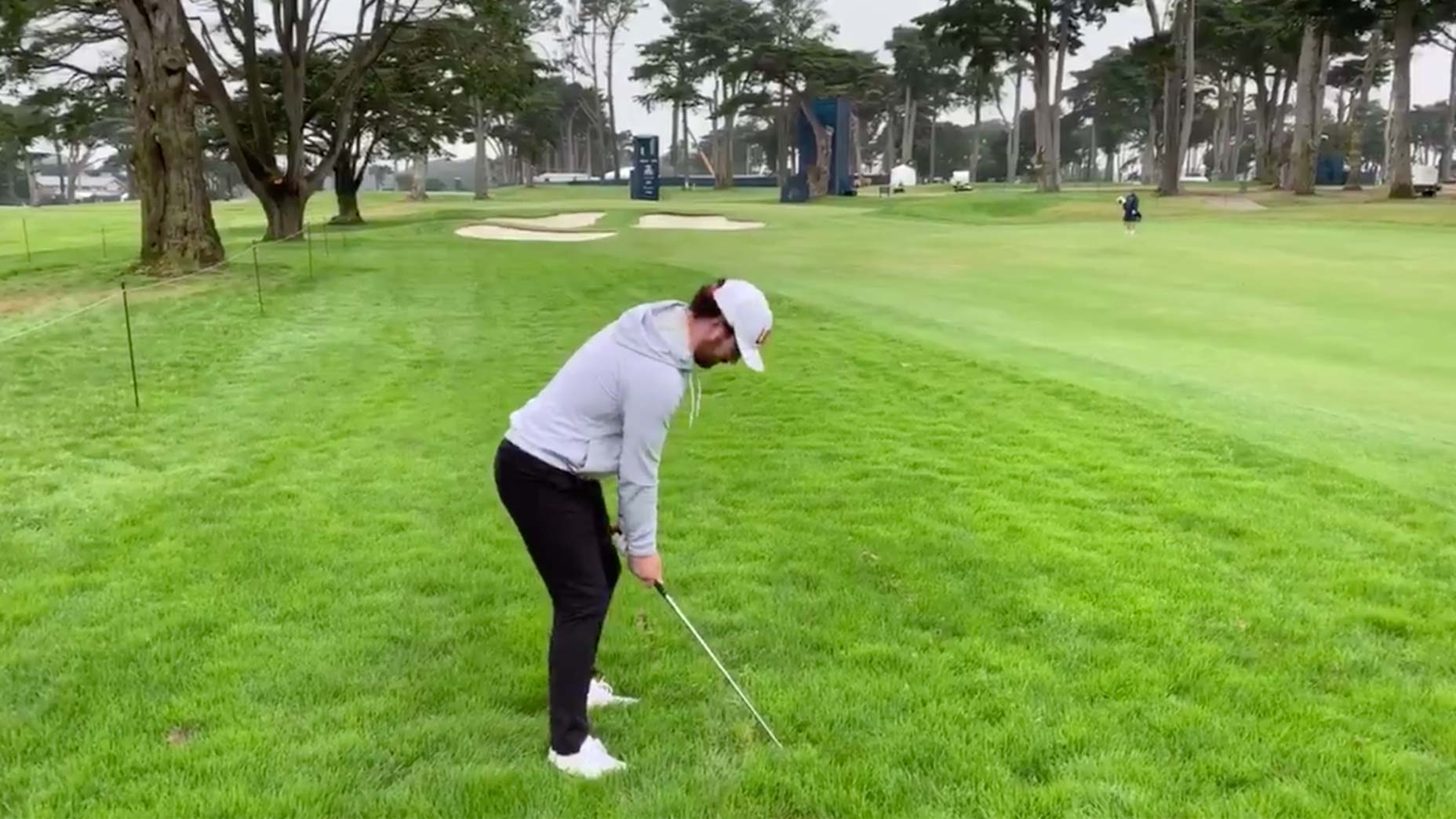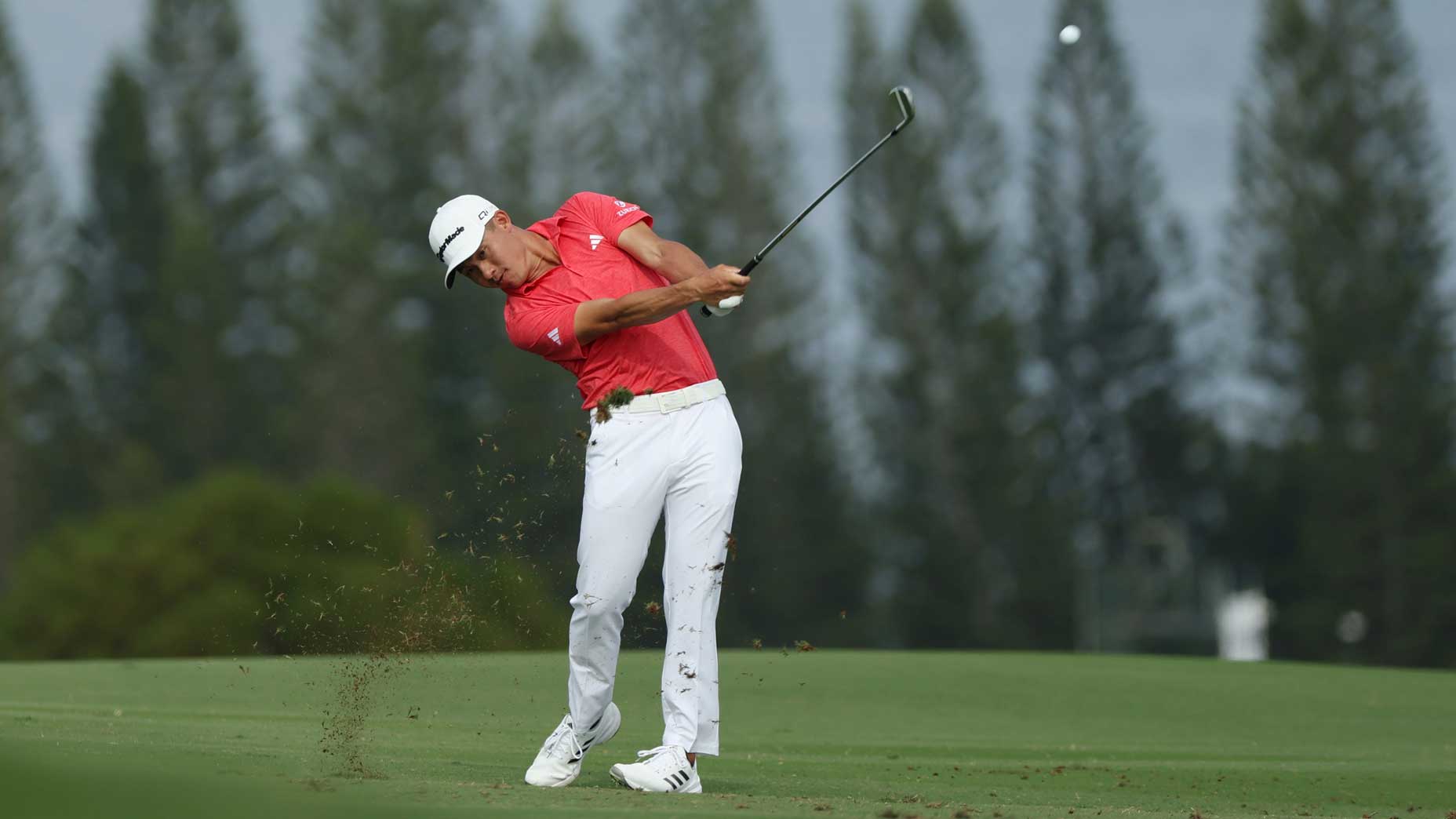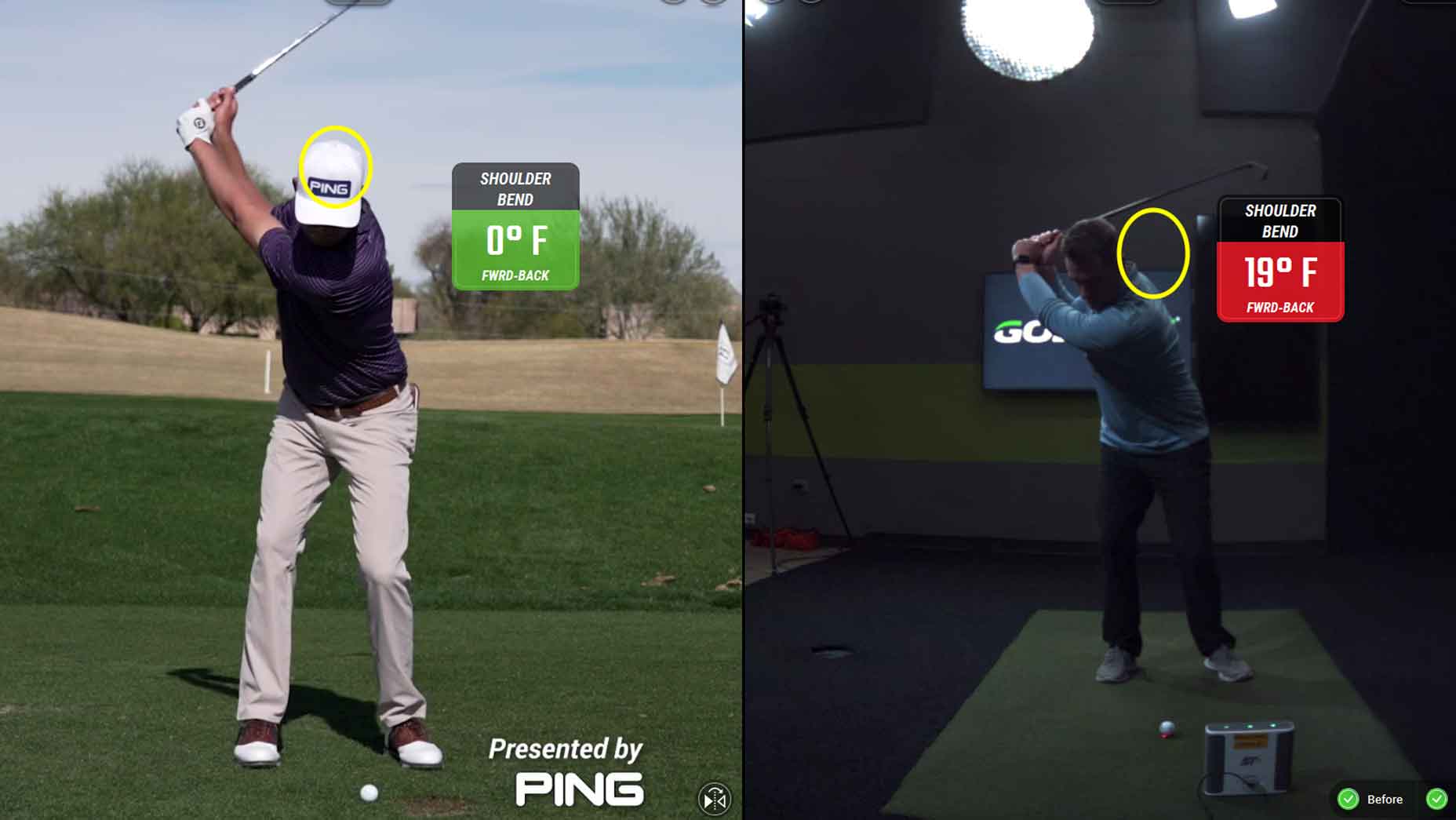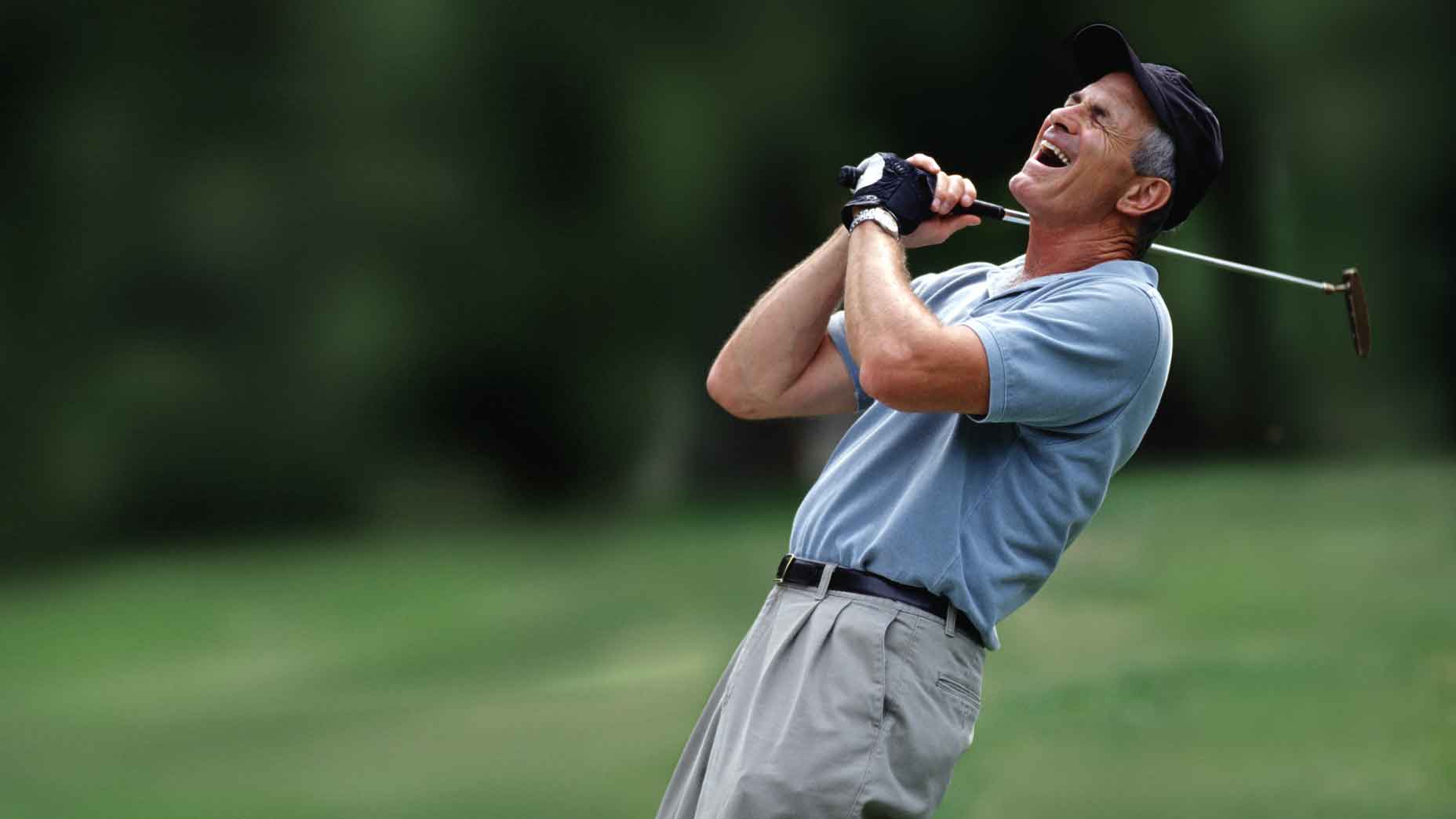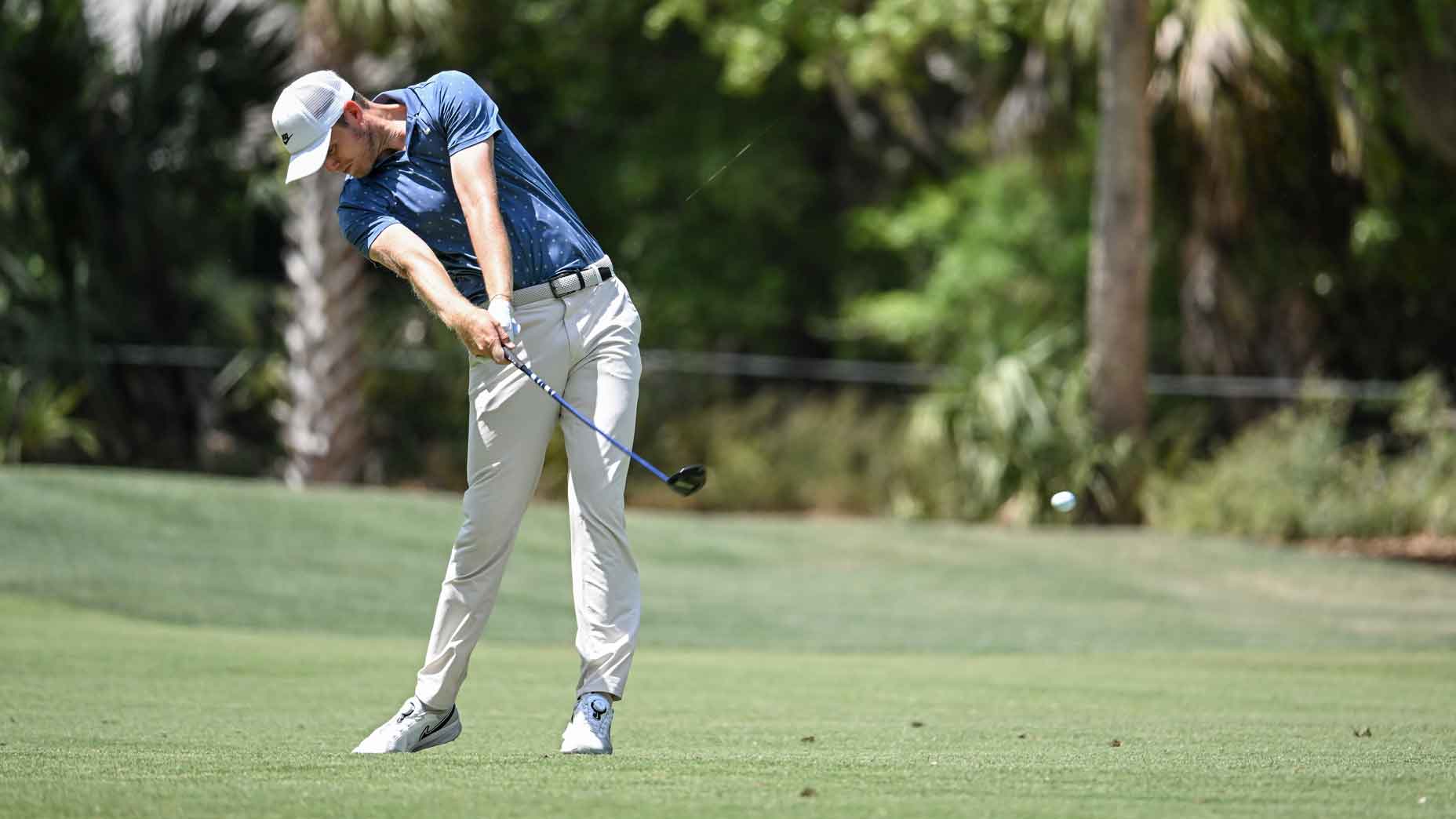There are lots of different ways of swinging a golf club, as we all know by now. The unfortunate flip side of that is that there are lots of ways you shouldn’t swing a golf club. Swinging your swing is good, as long as you remember that the very best players also do certain things in their golf swings that make it all work.
If you don’t do those, you won’t be able to hit the ball the way you want.
It was those similarities that GOLF Top 100 Teacher and GOLFTEC Vice President Nick Clearwater took a keen eye to during his recent presentation at the GOLF Top 100 Teachers Summit.
Using insights from the company’s new AI-driven Optimotion technology, Clearwater explains that a key separator in skill is that higher handicaps tend to sway off the ball on the backswing far more than lower handicaps and pros. One way of understanding if you’re doing this in your golf swing is to draw a circle around your head, and a line up your trail leg, while filming yourself face on.
“You can draw a circle around somebody’s head and a line up their right leg, that’s a fine way of doing it,” he says. “You can get pretty far that way … it’s how we always had to do it in the past.”
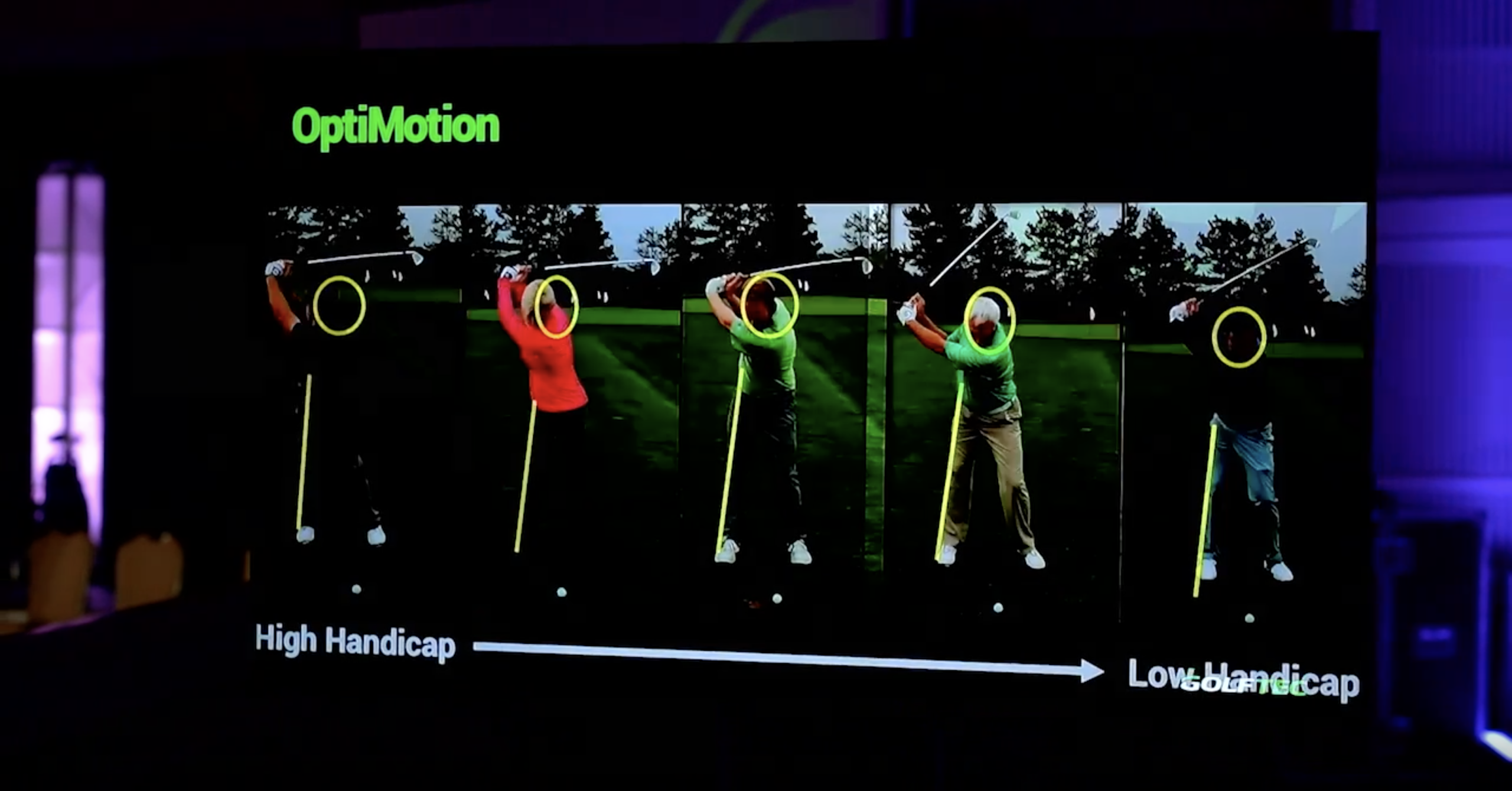
Why you should straighten your trail leg on the backswing
But the company’s new Optimotion technology, which uses AI to track and measure specific joints, has given Clearwater the ability to focus on specific movements that can help prevent golfers from swaying off the ball. Specifically how Clearwater says the trail leg should move in the golf swing, which he tracks uses Optimotion’s trail knee flex metric.
“I don’t think everybody gets a glimpse into this metric with really stud golfers like this,” Clearwater says of then 117th-ranked golfer Scott Vincent’s swing. “From address all the way to the picture you see on the right … he’s continuing to straighten his knee until that point in time.”

This, Clearwater says, doesn’t just help you stay centered during your golf swing, it also increases your range of motion, which helps you hit the ball longer. This is especially important for golfers who aren’t flexible.
“Players who tend not to be very flexible tend to violate this rule,” Clearwater says. “They either don’t straighten their trail knee enough, or they straighten it for a shorter time.
It’s some interesting insight that is only possible because of the new technologies helping us understand the golf swing better than ever before. To check out how your own swing looks on GOLFTEC’s Optimotion, you can book an appointment below.
